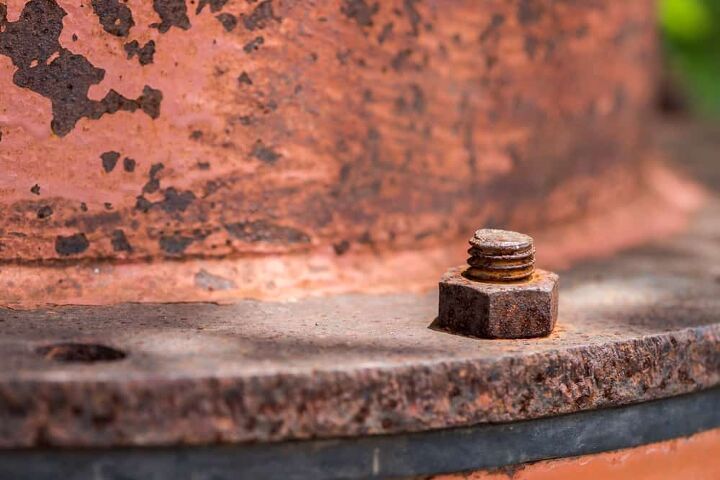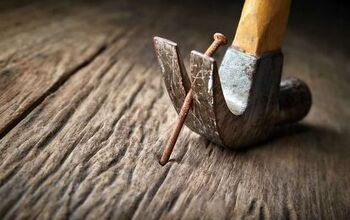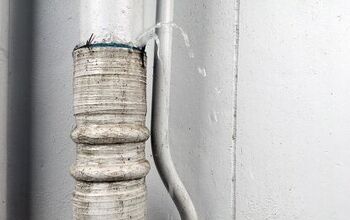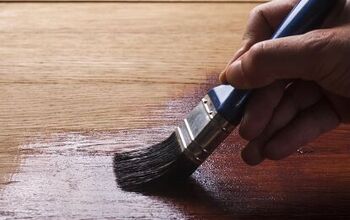How To Remove Rusted Bolts Without Heat (3 Ways To Do It!)

When repairing an old appliance or fixture inside your home, you’ll inevitably have to deal with rusted bolts. There are different ways to remove those rusted bolts. Some of those methods are easy to follow while others present a bit more risk.
One of the more commonly used methods of rusted bolt removal involves using heat. Don’t worry though because there are alternative methods if you’d prefer to stay away from torches.
To remove a rusted bolt without relying on heat, start by striking the bolt with a hammer a few times. Next, spray lubricant on to the bolt and let it sit for a while before using a wrench to turn it. If the bolt is not freed up completely right away, reapply the lubricant before using the wrench again.
Working on rusted over bolts is not a lot of fun, but it is necessary for salvaging different appliances and fixtures. Learn more about making this job easier by continuing with the rest of this article.
Do You Need Handyman Services?
Get free, zero-commitment quotes from pro contractors near you.

The Different Ways to Remove Rusted Bolts without Heat
Rust is a common thing to see in and around the home. You can find rust covering concrete surfaces, vinyl, and of course, metal objects. Rust also has a knack for getting on to smaller items, explaining why bolts and screws are highly susceptible to it.
The good news is that rusted over fasteners such as bolts can be removed in a variety of ways. Try out the methods you’re more comfortable with and see how effective they are.
Method 1: Use a Hammer, Lubricant, and Wrench
For this first method, you’ll need a hammer, wrench, and a lubricant of some kind. You can use different kinds of lubricant, but there’s nothing wrong with sticking to WD-40.
Step 1: Remove the Rust with a Hammer
Pick up your hammer and use it to strike the rusted bolt you want to remove. Strike with force, but don’t go overboard. The reason why you’re doing this is because you need to break the layers of rust so moderate force will do.
Step 2: Apply the Lubricant
With cracks now forming in the rusted shell, you can apply your lubricant of choice. We mentioned using WD-40 earlier, but you don’t have to limit yourself to that. Other options such as Liquid Wrench or PB Blaster are more effective, but they aren’t as commonly found in households.
In any case, spray a good amount of your lubricant of choice to the rusted over bolt. You should now allow the lubricant to sit for a few minutes. Waiting at least five minutes is recommended.
Step 3: Strike the Bolt Again
After allowing the lubricant to work its magic for a few minutes, you can hit the bolt again with your hammer. You should see more of the rust shake off after using the hammer again.
Step 4: Try to Remove the Bolt
Go get your wrench now and use it to start turning the bolt. At this point, the bolt should already be moving around.
If the bolt is still not coming free completely with the wrench, simply repeat steps two and three. Keep repeating those steps until you can free the bolt completely with your wrench.
Method 2: Use a Ratchet and Lubricant
Ratchets are also good tools to use for removing rusted bolts, especially if you have numerous sockets already. Use it along with your lubricant of choice to remove rusted bolts effectively.
Step 1: Find the Bolt That Fits
Go over to the bolt you want to remove together with your ratchet sockets. Fit the sockets over the bolt until you find the one that fits best. Once you find the right socket, go ahead and place it in the ratchet.
Step 2: Apply the Lubricant
Using the lubricant is not a must, but it will make your job much easier. Apply a good amount of the lubricant to the rusted bolt and just like earlier, let it sit for a while.
Step 3: Remove the Rusted Bolt Using the Ratchet
You can now use your ratchet to remove the rusted over bolt. The trick with using the ratchet is that you have to be quick with your actions. Working quickly allows the tool to become more effective.
Keep rapidly rocking the ratchet back and forth over the rusted over bolt. The bolt should start to come loose after a few minutes.
Method 3: Use Special Tools
The two methods we detailed above will work if you only have basic tools at home. They are effective, but they can take some time and a good amount of work. If you just want to get rid of rusted bolts in a hurry, other tools are arguably better to use.
Among the items you can purchase are bolt extractors. You can find bolt extractors in all kinds of hardware stores and purchase them online too. Probably the best tools for this job though are impact wrenches. Air-powered and electric impact wrenches are available and they excel at removing rusted fasteners.
You can try to loosen the bolt with a conventional wrench first to make things easier for the impact wrench. Just move it around a bit so it’s not completely stuck in place when you use the impact wrench on it.
How to Remove a Rusted Bolt Using Heat
Are you fine with using torches and other kinds of heating equipment? In that case, the method detailed in this section is worth trying out.
Step 1: Prepare Your Tools
We’ll be using different tools for rust removal and bolt removal this time around. Go grab your hammer, your wrench, and your lubricant.
Now as for your heating equipment, you’ll want to pick up a handheld propane torch. The stronger heat offered by propane is preferable to what butane can provide.
Step 2: Hit the Rusted Over Bolt with a Hammer
You cannot remove the bolt without doing something about the rust first. Because of that, we’ll be turning to our hammer again. Just like before, hit the bolt with a moderate amount of force to dislodge some of the rust.
Step 3: Lubricate the Bolt
Go grab your canister of lubricant and use it on the rusted over bolt. When applying the lubricant, try to aim for the spots where the rust has cracked. That will allow the lubricant to penetrate the bolt better and dislodge more of the rust.
Feel free to repeatedly hit the bolt with a hammer and use the lubricant if you think that will help. Don’t worry if the bolt isn’t feeling loose yet though because there are other steps to follow.
Step 4: Apply the Heat
It’s now time for you to use the heat. Be very careful when using the handheld propane torch because you could do serious damage with it. Focus the heat on the wrong spot and you could damage the surface or ruin the paint. You may even cause something to explode if you point the torch in the wrong direction.
Aim for the nut when using your handheld torch. After applying enough heat, the nut should expand and break free of the bolt.
Step 5: Work on Removing the Bolt
You can now start working on removing the bolt. By this point, it should already be primed for removal. Secure your wrench over the bolt and start turning. Remember to turn the bolt to the left in order to remove it from its current position.
Also note that you can use the ratchet if you prefer. The impact wrench will also work really well here especially after the steps you performed earlier.
Do You Need Handyman Services?
Get free, zero-commitment quotes from pro contractors near you.

Related Questions
What Other Tools Can You Use to Remove the Rust Covering Bolts?
The hammer and lubricant are excellent tools for removing rust. However, you don’t have to limit yourself to those tools if you don’t want to. Another tool you can try is a wire brush. One with stiff bristles is preferred for brushing off the rust. Using a wire brush does have some drawbacks though.Most notably, using a wire brush to remove rust is a tiring and time-consuming task. That’s why it’s not the recommended tool for rust removal.While it’s not technically a tool, Coca-Cola can also be used to remove rust. The phosphoric acid present in Coca-Cola is what allows it to chip away at the layers of rust. Soak a rag in some Coca-Cola and then use that to wipe the bolt you want to remove. The Coca-Cola won’t take effect right away, however. You may have to wait a few hours before it starts removing the rust.
How Do You Keep Bolts from Rusting Over?
Preventing rust from completely covering bolts is possible. One thing you can do is to use paints or sealants to cover the fasteners and keep them shielded from corrosion.It’s also a good idea to use bolts together with matching metals. You can significantly reduce the flow of electricity by matching bolts and surfaces made from similar materials. With the flow of electricity slowed down, the rate of corrosion will similarly decrease in speed.

We are a team of passionate homeowners, home improvement pros, and DIY enthusiasts who enjoy sharing home improvement, housekeeping, decorating, and more with other homeowners! Whether you're looking for a step-by-step guide on fixing an appliance or the cost of installing a fence, we've here to help.
More by Upgraded Home Team



























